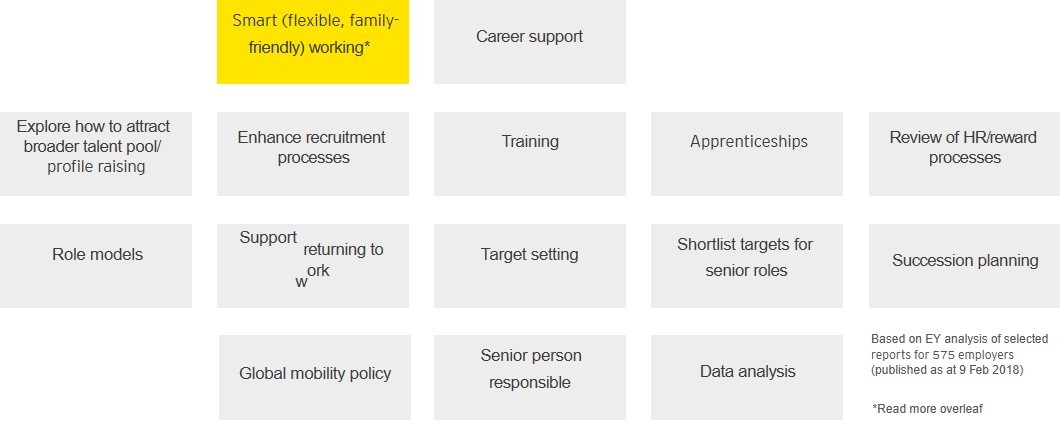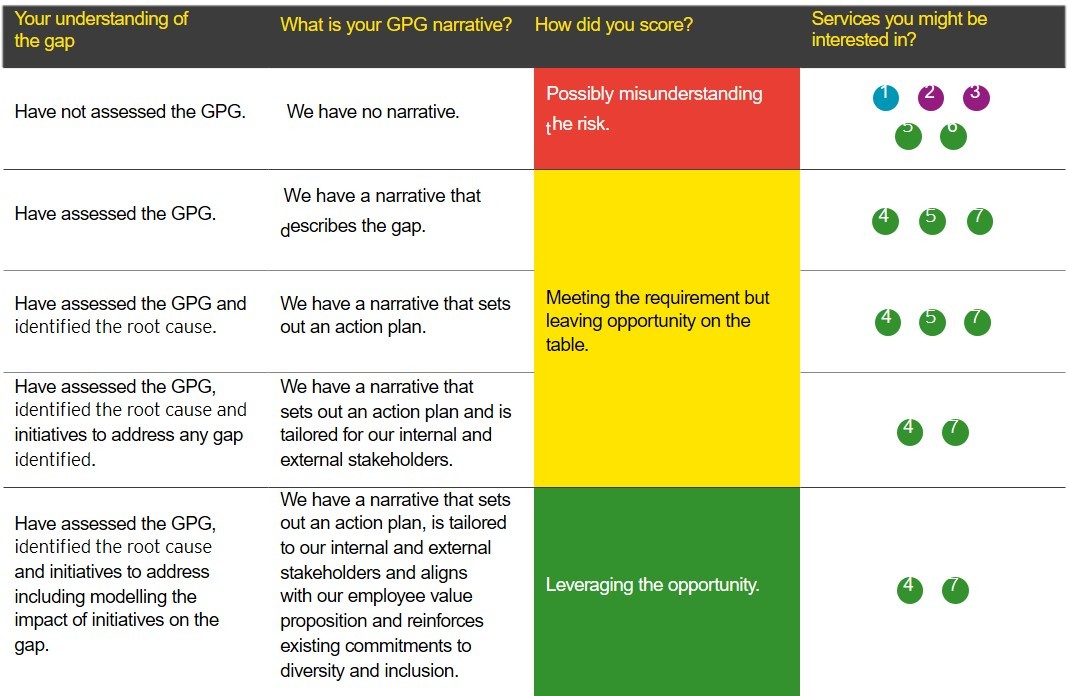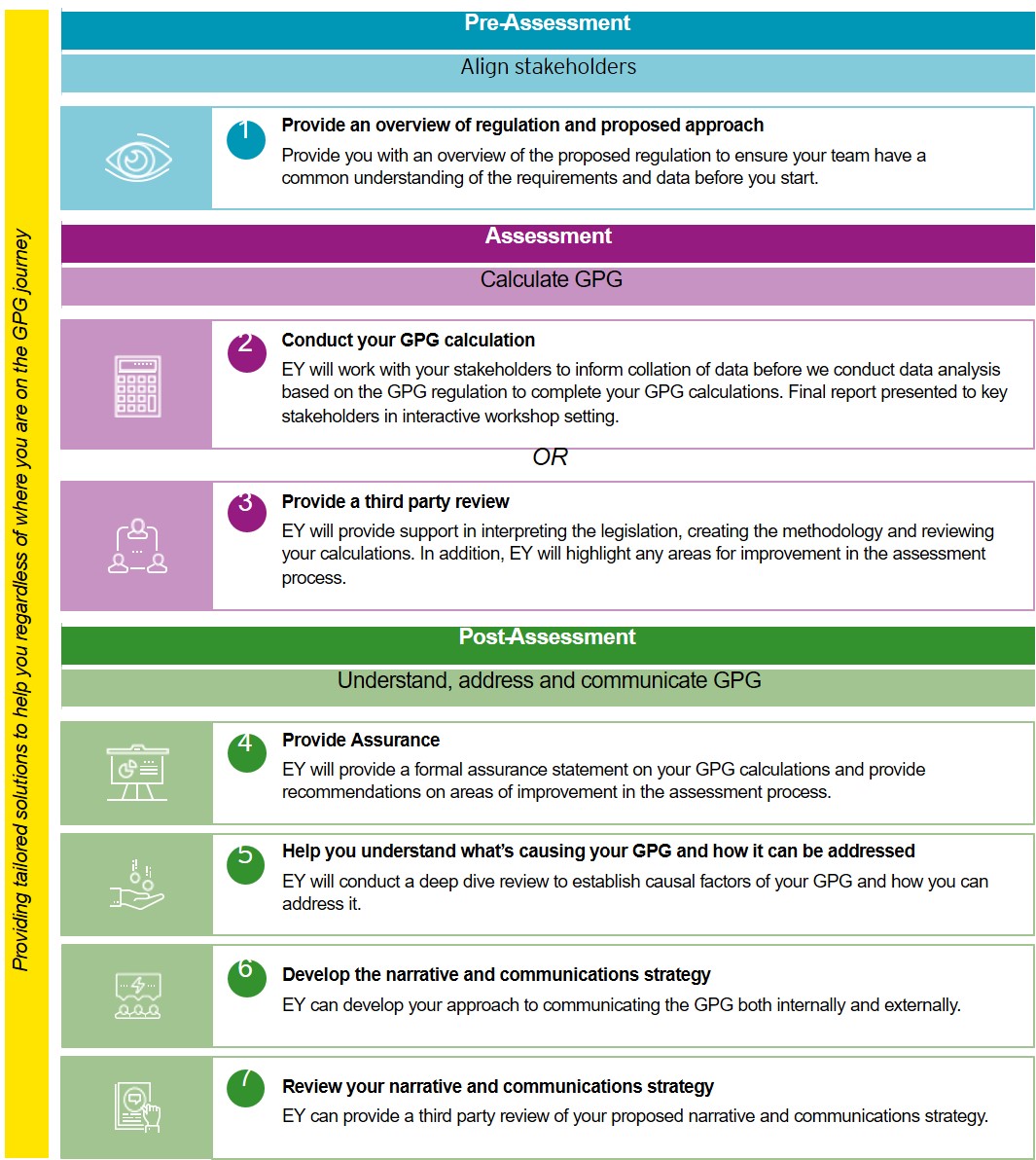Smart working, including flexible and family-friendly working conditions, is the most common action taken to address the GPG in the UK.
Those who choose to see gender pay gap reporting as an opportunity to enact change, will soon experience the countless benefits associated with having a more diverse and inclusive workforce, forming an integral part of a more prosperous and more equal economy and society across the island of Ireland.
What is the Gender Pay Gap?
The ‘pay gap’ is the difference in average pay between two groups in a workforce. In the case of the gender pay gap (GPG), it is the difference in average hourly pay between males and females in a workforce. The ‘pay gap’ and ‘equal pay’ are different. ‘Equal pay’ is being paid the same for the same/similar work.
The Gender Pay Gap Information Bill
The General Scheme of the Gender Pay Gap Information Bill is expected to be enacted in 2019 with organisations likely obliged to publish their GPG in 2020. This new regulation will apply to both public and private sector entities. It will first affect those with over 250 employees. After two years, it will affect those with over 150 employees and after three years, those with over 50 employees.
What will organisations be obliged to report under the legislation?
While the precise parameters have yet to be enshrined in legislation, it is expected organisations will be obliged to report on:
- Difference in mean hourly pay of male and female employees
- Difference in median hourly pay of male and female employees
- Difference in mean bonus pay of male and female employees
- Difference in median bonus pay of male and female employees
- Difference in mean pay of male and female part-time employees
- Difference in median pay of male and female part-time employees • Difference in mean pay of males and females on temporary contracts
- Difference in median pay of males and females on temporary contracts
- Proportion of male and female employees paid bonus pay
- Proportion of male and female employees who receive benefits in kind
- Proportion of male and female employees in the lower, lower middle, upper middle and upper quartile pay bands
Employers may also be required to report differences in pay by reference to job classifications.
How will it be enforced?
There are two mechanisms proposed to require employers to comply with the legislation including an application for an order to the Circuit Court and to the Workplace Relations Commission. In addition, officers will be designated to investigate a sample of employers to ensure that the information published is accurate.
Reasons behind the gap and how to address it
Reasons behind the gap
Following the requirement for organisations in the UK to report their GPG in 2018, the following are the most common reasons behind the GPG in the UK:






